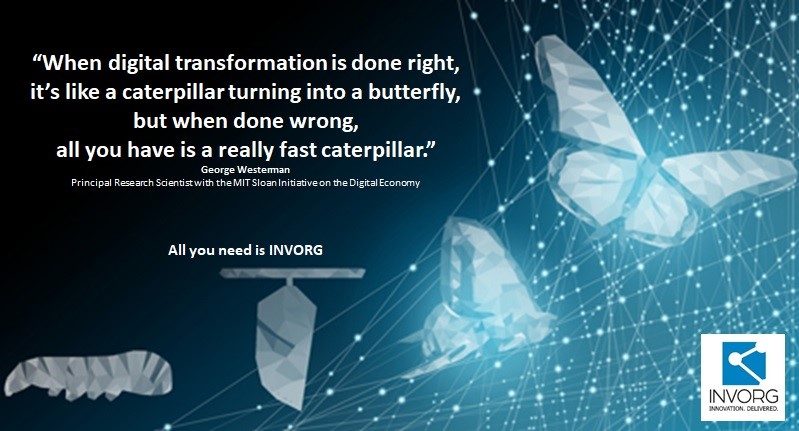
Introduction
In December 2019, a virus began spreading among the people in the Chinese city of Wuhan. In a matter of months, it had spread to 216 countries and territories in every continent (except Antarctica). On the 11th of March 2020, the World Health Organization declared the Coronavirus disease a pandemic. Governments had to take drastic action. They imposed lockdowns and stopped the assembly lines of several factories and, banned international travel.
The Covid-19 pandemic has made the involvement of digital transformation in all walks of life inevitable. Countries, cities, communities, organizations, families, and individuals who had access to the internet and other digital technologies managed the impact of lockdowns far better than those who did not. Many organizations are still surviving thanks to their digital investments. Meanwhile, others are facing the possibility of losing their profit or shutting down due to a lack of digital leadership. Some organizations started shifting to digital technology long before the pandemic began. Those organizations with strong digital leadership have flown far ahead of their brick-and-mortar competitors and even have put several of them out of business.
Now, as the world tries to move back to ordinary life, people are beginning to recognize a new normal at work. Even if Covid-19 ceases to be a threat, the possibility of future pandemics still exists. Organizational leaders must take this into account as they make decisions about their organizations’ future.
What is digital transformation?
Digital Transformation consists of harnessing the transformative power of the digital to improve the quality of life. Digital transformation is necessary for organizations of any size and type. This transformation is not merely a change. It is a complete paradigm shift like that of a caterpillar transforming into a butterfly. It unlocks capabilities never thought of before and opens new avenues for organizations to explore and conquer.
The tale of Blockbuster and Netflix is a revealing example. Blockbuster was an American-based movie and video games provider with a worldwide outreach employing 84,300 people at its peak. Meanwhile, there was Netflix, born from a chat during a carpool drive, that offered rentals-by-mail service with 800 titles. Netflix started with a subscription-based DVD rental that gave it popularity but not much profit. However, by 2005 customers began to prefer ordering DVDs online to visiting stores. With this shift, Netflix’s profits soared while Blockbusters’ plummeted. This change of fortunes continued till, in 2010, Netflix was signing deals with the top cinematic industries, and Blockbuster was filing for bankruptcy. The early use of digital technology by Netflix was the main reason for this reversal of fortunes.
What is required for a successful digital transformation?
Digital transformation of organizations does not simply mean adding a few more digital tools. This transformation needs visionary digital leadership. Organizational leaders must formulate a well-defined vision of how they want to see their organization in the future. The digital leader should develop a digital strategy that will help them align their organizational goals to the current trends with emerging digital technologies. Then the digital strategy must be divided into a series of projects forming a realistic roadmap.
A dynamic team will need to execute and manage the digital transformation roadmap. The team will also need to measure the success of the roadmap, identify early warning signs in the operations, and provide prompt solutions. The management must invest sufficient funds in this digital transformation to ensure its success. Organizational leadership must have faith in this Digital Transformation. The culture of the organization must be conducive. The CEO of INVORG said, “A vision without action will remain a dream.” Cherishing ambitions for your organization’s progress and expansion is futile without harnessing the proper digital leadership
What is digital leadership and who are these digital leaders?
But who provides this digital leadership? The “engineer-in-chief” of digital transformation in organizations is usually the CIO (Chief Innovation Officer, also called Chief Information Officer or Chief Digital Officer). All major businesses like Amazon, Microsoft, IBM, Apple, and Google have a CIO or a team of CIOs as members of their staff. They look at emerging trends and technologies and suggest appropriate changes to the top leadership. They oversee developing an appropriate digital strategy that decides on the organization’s digital investment, expands market share, and ensures continued growth.
What are the challenges faced by organization is securing digital leadership?
Small to mid-organizations may not be able to hire a full-time team of CIOs that multi-national companies such as Apple or Amazon can. They could employ one CIO as a member of their staff. But this has certain drawbacks. One CIO will not be able to take care of every aspect of digital transformation necessary for the organization because they will not have expertise in every field required to transform an organization digitally. Besides, they may not have enough experience to foresee problems, identify early warning signs, and design quick solutions.
What is the solution?
Organizations must look for the services of a virtual CIO (vCIO) to develop digital leadership and execute the digital transformation. A vCIO is one who is not a permanent member of the staff of an organization but is a part of the organization team. This position gives the vCIOs the flexibility to work from anywhere, on-site, or remotely. Similarly, employers have a wider range of choices as they can hire expertise from anywhere, even from another continent. Companies such as INVORG provide this service.
Virtual CIOs will bring a fresh perspective into the organization and identify problems that the organization staff might not have recognized yet. They will improve day to day functions and pave the way for future development. Virtual monitoring will also enable the early detection of problems. vCIOs will enable an organization to form strategic partnerships to outsource some organizational functions such as digital risk management, digital infrastructure management, optimization of disaster recovery, continuity measures, and evaluating and acquiring various digital solutions. They will also arrange backups and cloud storage so that organizational data would be safe in case of software or equipment breakdown.
Chief Innovation Office instead of Officer
There is another gain found when hiring a vCIO. In such instances, an organization will have access to a virtual Chief Innovation Office rather than a single officer. Although the organizational leaders will be paying and communicating with one CIO, he/she will be working with a team of experts in deciding and designing the best digital strategy for your company. This collaboration will ensure the organization will benefit from the expertise, knowledge, and experience of a team of seasoned CIOs, which is more than some big businesses have in their staff. Organizations now can access a team of experts to review and upgrade all aspects of the organization, instead of a single CIO who will only focus on his/her area of expertise. For example, a company that provides vCIO service will have a team of CIOs experienced in fields such as digital infrastructure and security, risk management, cloud services, application architecture, and project management. When an organization hires the vCIO service from such a company, the organization will receive assistance from the entire team.
Conclusion
Virtual CIOs will enable organizations to develop their digital strategy, execute the strategy, and leverage internal and external resources to achieve the organizational goals and objectives. The vCIO service provides organizations the chance of affordable investment and flexibility to hire the best digital leadership. vCIOs will digitally transform the organizations enabling them to reach their potential and go further than they thought possible.
About the Author(s)

Sumithreyi Sivapalan is a graduate of the University of Colombo, Sri Lanka in English Literature (major), Sociology and International Relations. She lives in Jaffna (Sri Lanka). Her passion is creative writing. She has privately published a poetry book and contributed individual poems to anthologies, including one in “No One is Listening”, a British Council anthology of Sri Lankan poems. Sumithreyi wants to leverage her passion in creative writing and her knowledge in sociology to inform and educate readers on leveraging digital technology for uplifting humanity. Sumithreyi holds a content writer role with INVORG and MuniLogic.

Joseph founded INVORG focusing on client-centric service delivery platform for innovating local organizations, not-for-profits, home and community support organizations and small to medium sized businesses. Joseph holds a Chief Information Officer Certification from Carnegie Melon University, USA and from the US General Services Administration. He is an IT veteran with over 20 years of leadership in technology, including four years as CTO for the City of London.
